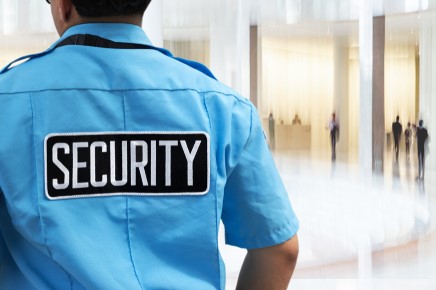While technological advancements have revolutionized security measures, it is crucial to recognize that technology alone cannot guarantee a secure environment. To achieve comprehensive security, physical security professionals from diverse industries must embrace the 3Ps Model: People, Policies, and Practices. By understanding and implementing this holistic approach, physical security professionals can create robust security frameworks that are effective and adaptable across various industries.

People: The Cornerstone of Security
In any security strategy, people play a pivotal role. Security managers must prioritize hiring, training, and cultivating a team of dedicated individuals who understand the importance of their responsibilities. These personnel serve as the face of security, interacting with employees, customers, and visitors daily. Staff should exhibit qualities such as professionalism, knowledge, fairness, and consistency to build trust and foster a safe environment. Regular vetting, continuous training, and professional development programs are vital in ensuring the competence and effectiveness of the security team.
Policies: Establishing the Foundation
The formulation and implementation of comprehensive security policies are essential components of physical security. Policies should be designed to address specific risks, vulnerabilities, and compliance requirements unique to each organization or industry. They serve as a roadmap for security practices, providing clear guidelines for personnel to follow. Well-crafted policies encompass access control, incident response, emergency management, and other critical aspects of security. Regular reviews, updates, and alignment with industry standards are necessary to ensure their relevance and efficacy.
Practices: Translating Policies into Action
While policies set the framework, it is through consistent and disciplined practices that security measures are effectively executed. Practices should encompass a wide range of actions, including physical security patrols, video surveillance monitoring, access control implementation, and visitor management protocols. All personnel, from executive leadership to front-line staff, must understand and adhere to these practices. Regular drills, exercises, and audits are instrumental in identifying gaps, fine-tuning procedures, and reinforcing a culture of security awareness.
The Synergy of the 3Ps
The true strength of the 3Ps Model lies in the interconnectedness of its elements. People, policies, and practices are interdependent and mutually reinforce each other. Well-trained personnel who embrace best practices bring policies to life, effectively implementing security measures. Policies, when properly communicated and supported by thorough training, empower people to execute security practices confidently. Conversely, effective practices validate the relevance and effectiveness of policies, highlighting areas for improvement or modification. This cyclical relationship ensures continuous enhancement and adaptation in response to evolving threats and industry standards.
Beyond Technology
While technology undoubtedly plays a crucial role in physical security, it should not be viewed as a panacea. Advanced surveillance systems, access control technologies, and intrusion detection devices are valuable tools, but their efficacy is maximized when integrated within the 3Ps Model. Rather than relying solely on gadgets, security professionals must prioritize the human element, sound policies, and consistent practices to create a comprehensive and resilient security ecosystem.
Conclusion
In the complex landscape of physical security, the 3Ps Model provides a solid foundation for professionals across various industries. By recognizing the importance of people, policies, and practices, security practitioners can establish a robust security framework that ensures the safety of individuals and assets. The 3Ps Model encourages a holistic approach that values competent personnel, well-defined policies, and disciplined practices, leading to a secure environment that can adapt to evolving threats and challenges. By embracing this model, physical security professionals can forge a safer future for organizations and communities alike.

Kevin Altenhofel is Director of Campus Safety and Security at Taft College in Taft, Calif., as well as California Chapter President of NACSA, the National Association of Campus Safety Administrators. He was previously a sworn municipal police officer from 2002 until 2018.
